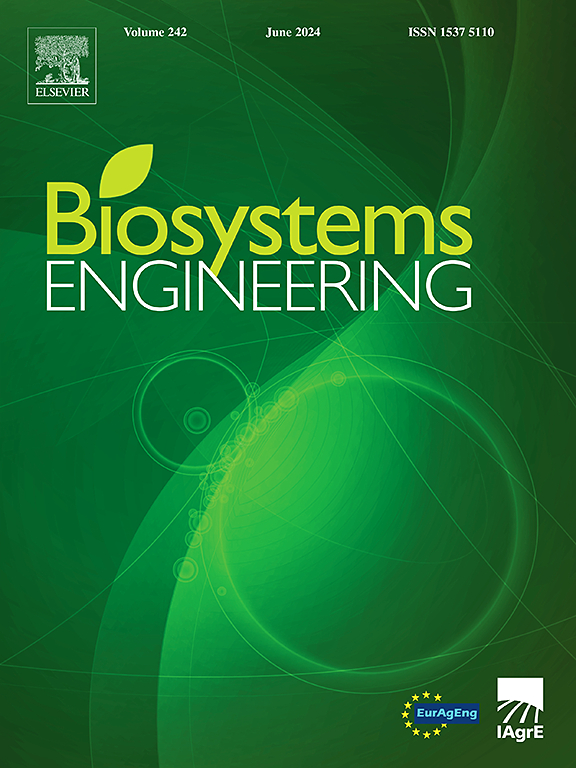Real-time six degrees of freedom grasping of deformable poultry legs in cluttered bins using deep learning and geometric feature extraction
IF 4.4
1区 农林科学
Q1 AGRICULTURAL ENGINEERING
引用次数: 0
Abstract
Grasping deformable natural food products in pick-and-place applications presents a challenging problem in robotics, particularly in cluttered environments. Traditional techniques, such as centroid-based grasping and grasping along the principal axis, often fail when applied to deformable and complex-shaped objects. A real-time grasp pose estimation algorithm was proposed in this paper for robotic pick-and-place tasks involving deformable objects. Instance segmentation, keypoint detection, and stable six degrees of freedom (6-DoF) grasp pose estimation were jointly performed within a unified framework, while avoiding collisions using deep learning and geometric features. Grasp candidates on the objects were generated based on maximum curvature and convex hull methods, which were then filtered to identify the most stable grasp. By projecting 2D keypoints into the depth image, the grasping points were obtained in 3D. The keypoints were used to estimate the 3D orientation of the grasp. The success rate of grasp pose estimation was found to be 83.3 %, which increased to 93.7 % when object segmentation failures were removed. The algorithm was evaluated on a real robotic platform, demonstrating its ability to accurately grasp real poultry legs from a pile, with success rates of 93.8 % for simple scenes and 75.0 % for cluttered scenes. These results highlight state-of-the-art performance and showcase the efficacy and robustness of the proposed system.
利用深度学习和几何特征提取对杂乱垃圾箱中变形家禽腿的实时六自由度抓取
在拾取和放置应用中抓取可变形的天然食品是机器人技术中的一个具有挑战性的问题,特别是在混乱的环境中。传统的抓取技术,如基于质心的抓取和沿主轴的抓取,在应用于可变形和复杂形状的物体时往往失败。针对可变形物体的机器人拾取任务,提出了一种实时抓取姿态估计算法。实例分割、关键点检测和稳定六自由度抓姿估计在统一框架内共同完成,同时利用深度学习和几何特征避免碰撞。基于最大曲率法和凸包法生成物体上的候选抓点,然后对候选抓点进行过滤,以确定最稳定的抓点。通过将二维关键点投影到深度图像中,获得三维的抓取点。关键点被用来估计抓取的三维方向。结果表明,该方法的抓取姿态估计成功率为83.3%,去除目标分割错误后,抓取姿态估计成功率提高到93.7%。在一个真实的机器人平台上对该算法进行了评估,证明了它能够准确地从一堆真实的家禽腿中抓取,简单场景的成功率为93.8%,杂乱场景的成功率为75.0%。这些结果突出了最先进的性能,并展示了所提出系统的有效性和鲁棒性。
本文章由计算机程序翻译,如有差异,请以英文原文为准。
求助全文
约1分钟内获得全文
求助全文
来源期刊

Biosystems Engineering
农林科学-农业工程
CiteScore
10.60
自引率
7.80%
发文量
239
审稿时长
53 days
期刊介绍:
Biosystems Engineering publishes research in engineering and the physical sciences that represent advances in understanding or modelling of the performance of biological systems for sustainable developments in land use and the environment, agriculture and amenity, bioproduction processes and the food chain. The subject matter of the journal reflects the wide range and interdisciplinary nature of research in engineering for biological systems.
 求助内容:
求助内容: 应助结果提醒方式:
应助结果提醒方式:


